The 1914 Wheat Penny is a key coin in the Lincoln cent series, which has been in circulation since 1909 and remains in use today. Between 1909 and 1958, the reverse of the penny featured two wheat stalks, giving rise to the nickname “wheat pennies.”
The 1914 Wheat Penny is especially notable due to its various mint varieties and errors, some of which are extremely valuable. Below, we’ll explore the different types, values, and key details of this classic coin.

1914 Wheat Penny Value Chart
| Coin Type | MS/PR60 | MS63/PR66 | MS65/PR67 | MS66/PR68 |
|---|---|---|---|---|
| 1914 (No Mint Mark) Wheat Penny | $57 | $100 | $250 | $1,050 |
| 1914-D Wheat Penny | $2,750 | $4,650 | $7,150 | $12,000 |
| 1914-S Wheat Penny | $350 | $600 | $1,550 | $5,500 |
| 1914 Proof (No Mint Mark) Wheat Penny | $375 | $3,350 | $7,000 | – |
(Values are based on the standard price guide for brown-colored coins.)
This chart illustrates the wide range of values for the 1914 Wheat Penny, with the Denver-minted (D) version being the rarest and most expensive. Uncirculated coins with high grades command the highest prices, especially those with strong eye appeal.
Wheat Penny Grading Scale
| Grade | Description |
|---|---|
| 1 | Basal State-1 |
| 2 | Fair |
| 3 | Very Fair |
| 4, 5, 6 | Good |
| 7, 8, 10 | Very Good |
| 12, 15 | Fine |
| 20, 30 | Very Fine |
| 40 | Extremely Fine |
| 50 | About Uncirculated |
| 60 | Mint State |
| 65 | Mint State |
| 70 | Mint State (Perfect Condition) |
For an accurate assessment of your coin’s value, refer to professional grading guides or consult an expert. Knowing your coin’s exact grade is essential when determining its market worth.
1914 Wheat Penny Value by Mint Mark
The Wheat Penny holds a significant place in U.S. currency history. Also known as the Lincoln Cent, this coin is widely admired by collectors due to its unique design, historical relevance, and affordability. For those new to coin collecting, the Wheat Penny is an excellent starting point.
Among them, the 1914 Wheat Penny is particularly noteworthy. While the majority were produced at the Philadelphia Mint, two other mints—Denver and San Francisco—also struck these coins, but in significantly lower quantities. As a result, these versions can be quite rare and highly valuable.
1914 No Mint Mark Wheat Penny Value
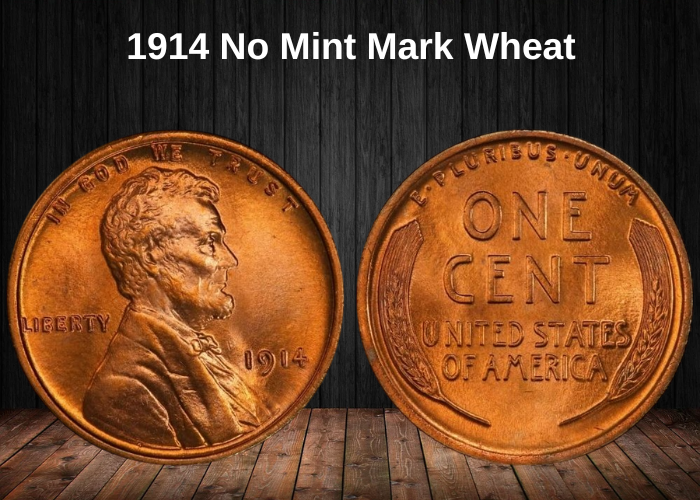
In 1914, a little over 80 million Wheat Pennies were minted, with the vast majority—75,238,432 coins—being struck at the Philadelphia Mint. Because of this high production volume, these pennies are still readily available today.
The Philadelphia Mint was the first mint in the United States, and for many years, it didn’t use a mint mark. This tradition continued even after other mints were established, and it wasn’t until 1980 that Philadelphia began stamping its coins with a ‘P’ mint mark. Therefore, if you find a 1914 Lincoln Cent without a mint mark, it was definitely minted in Philadelphia.
Is the 1914 No Mint Mark Wheat Penny Valuable?
In the world of coin collecting, rarity is directly tied to value. Unfortunately, the 1914 No Mint Mark Wheat Penny isn’t considered rare. If you own one of these, it is unlikely to be worth more than a dollar, unless it has been preserved in exceptional condition.
However, while most 1914 Philadelphia Wheat Pennies are common, those in higher grades (MS65 or above) are extremely rare. Due to this scarcity in pristine condition, you can still expect an MS66 coin to sell for approximately $1,050.
The highest recorded sale of a 1914 No Mint Mark Wheat Penny occurred in 2005, when an MS66 specimen was sold for an astonishing $48,300!
1914 D Wheat Penny Value
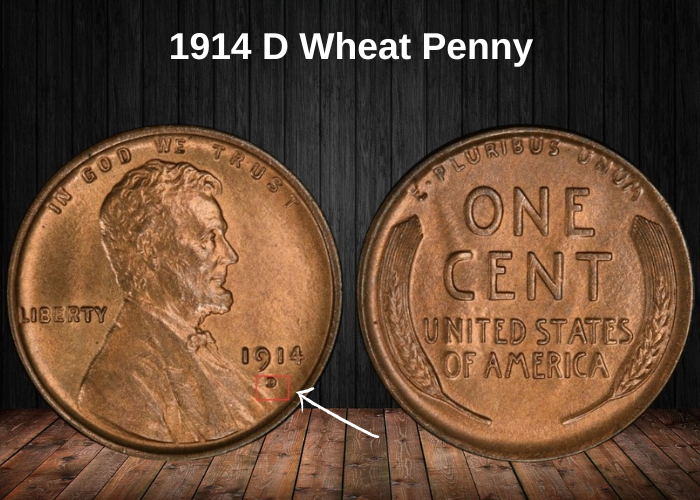
The 1914-D Wheat Penny is one of the most famous and valuable coins in the world of numismatics. What makes it so special? The answer is low mintage and even lower survival rates.
Why is the 1914-D Penny So Valuable?
While the Philadelphia Mint produced over 75 million pennies in 1914, the Denver Mint struck only 1,193,000 coins for circulation. That number may not be the absolute lowest among Lincoln Cents, but there’s another key factor that boosts its rarity—lack of early collectors.
Unlike some other rare pennies, it seems that very few people saved the 1914-D Wheat Penny when it was released. As a result, the surviving population is one of the lowest in the entire Lincoln cent series.
Because of this, prices for this coin skyrocket quickly:
- A 1914 No Mint Mark Wheat Penny in Very Fine (VF40) condition might fetch $32.50.
- A 1914-D Wheat Penny in the same grade (VF40) can easily sell for $1,200!
Beware of Fakes!
Due to the exceptionally high value of the 1914-D Lincoln Cent, it is one of the most counterfeited coins in U.S. history. Many forgeries start as a 1914 Philadelphia penny, with a fake ‘D’ mint mark added later.
If you’re planning to buy or sell a 1914-D Wheat Penny, make sure it is authenticated by a reputable grading service like:
- PCGS (Professional Coin Grading Service)
- NGC (Numismatic Guaranty Company)
High-Grade 1914-D Penny Values
The real excitement begins when we look at higher grades:
- An MS60 1914-D Wheat Penny is worth around $2,750—which is what some other pennies sell for in MS66 condition!
- An MS66 Brown 1914-D can command $12,000 or more.
- The ultimate prize? A Red MS66 1914-D Wheat Penny sold for an astonishing $158,625 in 2018!
If you happen to own a high-grade 1914-D Lincoln Cent, you might just have a life-changing coin in your collection!
1914 S Wheat Penny Value
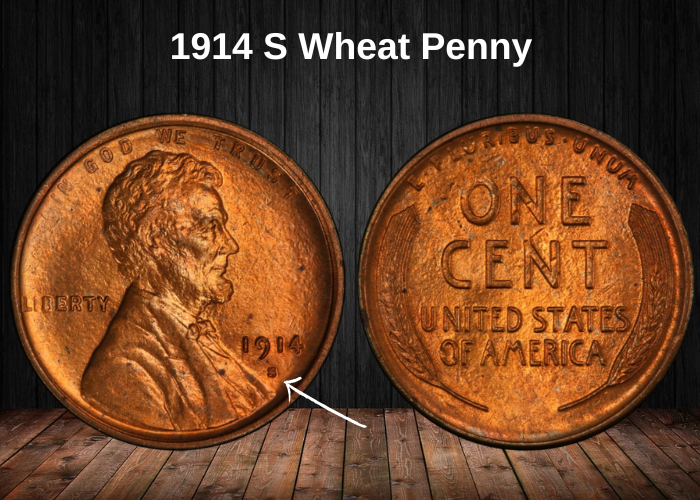
If it weren’t for the 1914-D Wheat Penny, the 1914-S Wheat Penny would undoubtedly be one of the most sought-after coins in the Lincoln Cent series. With only 4,137,000 coins minted in San Francisco, it is significantly rarer than its Philadelphia counterpart.
While it doesn’t command the sky-high prices of the Denver variety, this coin still holds significant value:
- A well-circulated example in Good condition is typically worth around $20.
- In Very Fine (VF20) condition, it can fetch $35.
- Coins graded MS60 can sell for $350.
- At MS65, the value jumps to approximately $1,550, making it far more valuable than a Philadelphia-minted coin of the same grade.
The highest recorded sale of a 1914-S Wheat Penny is truly remarkable. While it didn’t quite reach the record-breaking prices of the Denver version, an MS66 Red specimen still managed to sell for an impressive $105,800!
1914 No Mint Mark Proof Wheat Penny Value
In 1914, proof coins were made for die testing and archiving purposes. These coins were the first to be struck and have a particularly stunning appearance. The field (the flat part of the coin) has a mirror-like finish, which contrasts beautifully with the frosted design of the coin’s details.
A total of 1,365 of these 1914 No Mint Mark Proof Wheat Pennies were produced. While this may seem like an incredibly low number, there are some important points to consider:
- Proof coins are made with the intention of being flawless when struck, as they are never meant for circulation.
- Since they were not used in circulation, the likelihood of these coins surviving in perfect condition is much higher than that of business-strike coins.
Because of this, there are likely fewer 1914 Denver coins in perfect condition than proof pennies. However, despite these advantages, 1914 No Mint Mark Proof Wheat Pennies still command impressive values.
For example:
- In lower mint states, these coins can sell for several hundred dollars.
- A coin graded PR67 often goes for over $7,000.
- Coins with a PR68 grade are extremely rare, and one such coin sold for an incredible $126,500 in 2008.
It’s hard to estimate exactly what this coin would be worth if it were put back on the market today, but it would certainly fetch a premium price.
Rare 1914 Wheat Penny Error List
When it comes to 1914 Wheat Penny errors, the number of known mistakes is relatively small. However, there are still a few noteworthy errors from that year that collectors should keep an eye out for. Here are some of the key types of errors to consider:
1. Die Break
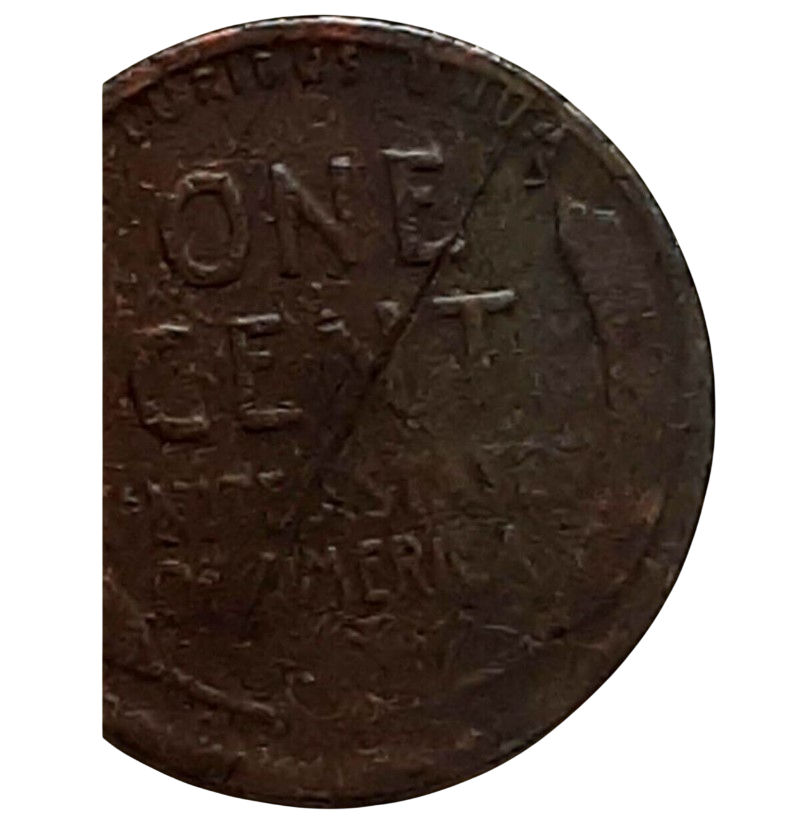
A die is the tool used to imprint the design onto a coin. These dies are crafted to be incredibly durable, but they can sometimes break. When this happens, the die will no longer produce clear, accurate impressions on the coins.
The break may not always be obvious, as it could be a small crack in the die. If you believe you have a coin with an error, it’s a good idea to have it professionally authenticated to confirm its value.
2. Fake Mint Mark
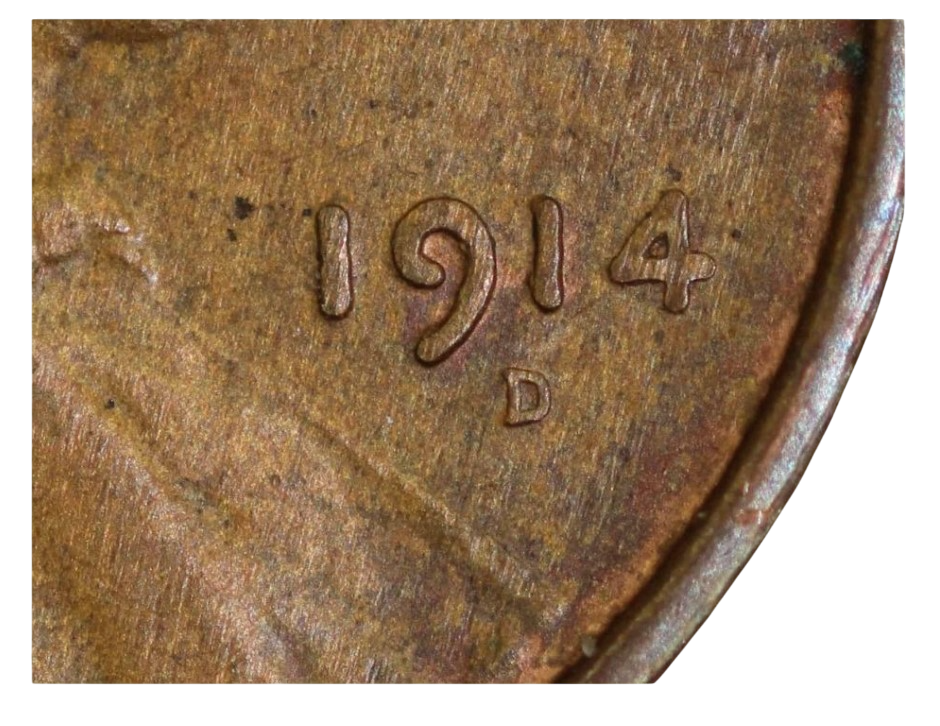
Although not a production error, it’s essential to be cautious of fake mint marks on the 1914 D Wheat Penny, as its high value makes it a prime target for counterfeiters. There are two common methods used to create these fakes:
- Adding the ‘D’ to a no-mint mark coin: This can often be identified because the ‘D’ might appear with weak details, incorrect positioning, or the wrong font.
- Modifying a 1944 D Wheat Penny: In this case, a counterfeiter may remove the left side of the first ‘4’ in the 1944 date, making it appear as 1914. This is easy to spot because there will be a noticeable gap between the middle two numbers.
To protect yourself, if you own a 1914 D Wheat Penny, it’s best to have it authenticated before selling. Likewise, if you intend to buy one, ensure it has been properly authenticated to avoid purchasing a fake coin.
3. Chipped Coin
Another common coin error is chipped coins. This happens when a coin is struck but doesn’t exit the collar quickly enough. As a result, the coin can get chipped or clipped, which means a small chunk is taken out of the edge of the coin, creating a noticeable irregularity in its shape. These errors can add uniqueness and value to the coin for collectors, especially if they are rare or particularly noticeable.
Where to sell your penny?
Now that you know the value of your penny, you might be wondering where to sell it. Don’t worry: here’s a guide to some of the best online platforms where you can easily sell your coins, along with their advantages and disadvantages.
Discover the best platforms for selling coins online (pros and cons).
1914 Wheat Penny Value – FAQs
1. How much is a 1914 penny worth?
The value depends on its condition, scarcity, and color. Regularly worn 1914 pennies are still easy to find and not worth much. However, higher-grade coins, especially those in mint condition or with unique characteristics like red or D-minted, can fetch significant amounts, even over $100,000 for rare specimens.
2. Is a 1914 penny rare?
A regular 1914 penny is not rare due to the large mintage. However, the 1914 D and 1914 S Wheat Pennies, due to their low mintage, are rarer and can be valuable, especially in higher grades.
3. Why is the 1914 D penny so expensive?
The 1914 D penny is expensive because Denver minted only about 1 million of these coins, making them rare, especially in higher grades like MS65 and above. The scarcity, combined with the coin’s desirability among collectors, drives up the price.
4. What year pennies are worth keeping?
It’s a good idea to keep pennies from every year, especially if they’re in good condition. For collectors, condition and rarity are key. However, if you’re not interested in collecting, pennies in poor condition typically don’t have much value unless they’re rare or have unique characteristics.



















































